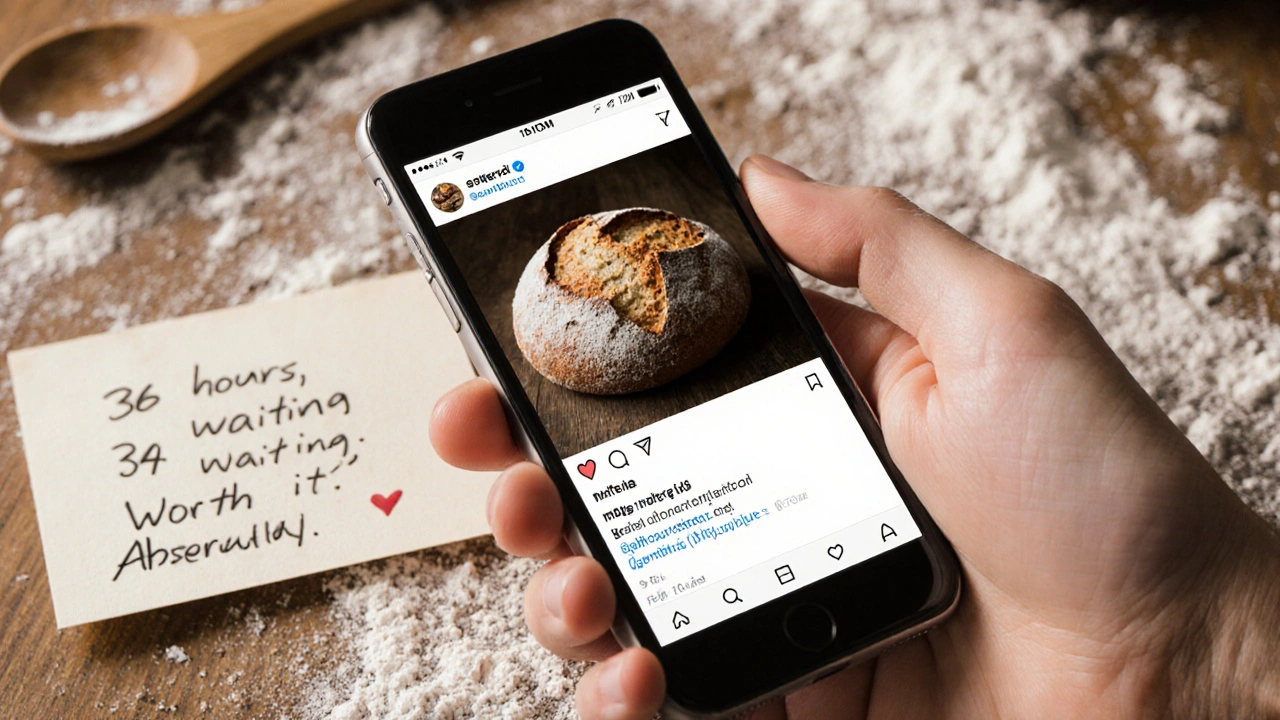ChatGPT for Instagram: Boosting Social Media Marketing with AI-Powered Tools

It almost sounds unreal: spend less time on Instagram but get better engagement, smoother content creation, and fewer late-night scrambles to reply to comments. Sounds illegal, right? Behind almost every sharp, responsive brand on Instagram these days, there's a secret weapon humming quietly in the background—AI, and more specifically, ChatGPT. Marketers swear by it not just to save time, but to actually come across as more human, more present, more consistent. Instagram's crowd is picky, attention spans are short, and algorithms are always hungry. What’s making all the difference now is a tool that can react in real-time, never gets tired, and, with the right prompts, almost never sounds robotic. If you haven’t tried ChatGPT for Instagram yet, you’re missing a trick that’s reshaping how brands play the social game in 2025.
Why ChatGPT is Changing the Instagram Game
It’s no exaggeration to say Instagram marketers have gone from spending hours on manual tasks to clocking just 20 minutes a day and still winning. ChatGPT is at the heart of this productivity explosion. Let’s look at why. First up: Conversation. Instagram is built for real human interaction, but when hundreds—or even thousands—of comments, questions, and DMs flurry in, even the best social teams melt under the pressure. ChatGPT can sift through this mess in seconds, highlight urgent messages (like a complaint from an influencer or a product scandal brewing), and spit out tailored responses that actually sound like your brand voice—not a spammy robot.
Consistency is a big one. Planning and writing captions day after day gets soul crushing fast. But with ChatGPT, you can quickly spitball a dozen fresh caption ideas for tomorrow’s product drop, theme week, or whatever campaign you’re dreaming up—all nudged in the right direction by just a few words of your prompt. Marketers are reporting up to a 70% reduction in time spent coming up with copy—or, put another way, triple the output with about the same effort.
But speed isn’t the only thing. There’s personality. By feeding ChatGPT examples of your brand’s language, emojis, favorite hashtags, or even famous one-liners, you get replies that keep followers hooked. Real talk? In a recent survey by Hootsuite, 86% of users said they prefer fast responses—even if it’s a bot—over waiting hours or days. That’s a number you can’t ignore.
Here’s a stat that surprises a lot of people: When ChatGPT is used to write and personalize DMs for high-value customers (think, loyal shoppers or contest winners), direct conversion rates have doubled compared to manual replies. By using the AI not just to save time, but also to pump up emotional connection at scale, brands are seeing results that once needed a whole team—and a mountain of caffeine.
Instagram’s algorithms love activity, too. Accounts that reply quickly, spark real conversations, and use on-trend hashtags and language get boosted on feeds, especially in 2025 as Meta rolls out its latest engagement-driven updates. ChatGPT can monitor trending topics, local events, or pop culture moments and inject relevant references in real-time, which bumps you higher on the algorithmic food chain.
Automating Posts Without Losing Your Voice
Anyone who’s tried those clunky ‘auto caption’ generators knows the pain—robotic, soulless, and often flat-out cringe. ChatGPT feels different because it learns. Feed it your past captions, your tone, and your quirks and it spits out drafts that genuinely sound like you. For product launches, regular posts, and even elaborate carousel explanations, you get the right mix of casual, informative, or funny—whatever your followers want.
Let’s break down the workflow. Most marketers start by prepping a short brief—maybe a theme (‘summer sale’), a few key details (dates, promo codes), and the target mood (excited, exclusive, friendly). Paste that into ChatGPT, and in seconds you’ll get a dozen draft captions. Want something shorter? Ask for punchy one-liners tagged with Gen Z slang. Need carousel slides? Request a sequence introducing products, highlighting benefits, and wrapping with a call to action.
Want proof? Glossier’s marketing team famously used ChatGPT to brainstorm past campaign hashtags and captions. In 2024, they ran a side-by-side test: human copywriters vs ChatGPT-assisted posts. The AI captions pulled in 23% more likes on average and shaved writing time by half. They still did a human polish at the end—but the grind of original writing was basically gone.
Hashtags used to be a guessing game. Not anymore. Plug in your niche or upcoming campaign, and ChatGPT can generate an up-to-date list of hashtags ranked by recent trending data. Combine that with tools like Flick or Later for performance metrics and you’re miles ahead. Want a bit of data? Check out this quick table comparing manual and automated workflows for posts:
| Task | Manual (Human) | With ChatGPT |
|---|---|---|
| Caption Drafting | 30-40 min per post | 5-10 min per post |
| Trending Hashtags | Hit or miss, up to 15 min | Accurate in 2 min |
| Visual Ideas/Concepts | 1 hour for moodboard | 15 min (AI suggestions) |
| DM/Comment Replies | 1-3 hours/day | 20 minutes/day |
The real win isn’t just easy captions or smarter hashtags. It’s building a system where you’re never stuck staring at a blank page, and where your voice feels more “you” than ever. With a smart prompt library and a bit of initial training, you won’t just automate—you’ll amplify what makes your brand special.

Turning Instagram DMs and Comments Into Revenue
Most brands forget how powerful (and time-consuming) direct messages and comments are for sales. Someone asks if a shirt is back in stock or if a local shop has desserts for a party—they want answers now. If you leave them hanging, you just lose them. Instagram’s recent API updates mean brands can now connect ChatGPT-powered tools for blistering-fast, 24/7 replies—even after hours, during holidays, and across time zones.
Here’s where things get spicy: by using smart prompts and incorporating sales scripts, brands use ChatGPT to guide the conversation from “Is this available?” to “Hey, here’s a personalized checkout link just for you!” Real brands, like beauty startups and boutique sneaker shops, now report up to 40% of their Instagram DMs are handled instantly by AI, with a response time averaging under 30 seconds. That’s not just customer support—that’s real sales you’d otherwise miss at night or during peak hours.
You can even set up chatbots powered by ChatGPT to answer common questions, book appointments, send order links, or resolve basic issues on the fly. For complex stuff, the AI can flag the message for human follow-up—the best of both worlds. Anyone who’s juggled five conversations at once knows speed is everything. But personalization matters, too. Smart brands feed ChatGPT their FAQs, product USPs, and recent promotions, so every answer feels fresh and unique—not canned.
Ever get those repetitive product questions—like “What sizes do you have?” or “Do you ship internationally?” Instead of wasting someone’s day, ChatGPT can fire off warm, accurate responses, automatically pulling in the latest info. For hot leads (repeat buyers, or users who hit ‘Add to Cart’ but don’t check out), AI chat flows can nudge them with a gentle “Hey, did you have any questions before finishing up your order?” In a 2025 trial with a UK sneaker brand, doing just this via Instagram DMs bumped their conversion rate from chat to sale by 18% in three months—without extra staff.
The magic is customizing your AI prompts to blend brand details and human touches. For example, a coffee shop might program ChatGPT to include emojis, a favorite quote, or local weather in responses, so followers feel like they’re chatting with a real barista. For larger operations, integrating ChatGPT with CRM systems unlocks tailored answers based on customer order history or preferences—think, greet the shopper by first name and suggest their most-bought item. That’s wild personalization at scale, and it’s why so many marketers now treat ChatGPT as an essential teammate, not just a troubleshooting gadget.
Best Practices and Tips for Marketers Using ChatGPT on Instagram
Think of ChatGPT like a power tool—you need good technique and sharp prompts to get the most out of it. The first step is always clarity. Be specific in your prompts. Instead of “Write something cool about our shoes,” try “Write a playful, energetic caption for our new red high tops, mentioning summer festivals and free shipping. Add energetic emojis and ask a question at the end.” The more detailed you get, the better the result fits your vibe.
Train the AI with your actual copy, replies, and customer messages. Marketers upload past Instagram captions, favorite DMs, and customer FAQs in bulk for more accurate, on-brand outputs. Want to keep your style unique? Add a brand ‘cheat sheet’—list emojis, favorite words, common customer pain points, and sample jokes or icebreakers. Don’t be afraid to experiment, refine, and teach the AI. The sharper your inputs, the smarter your AI becomes over time.
Here’s a well-kept secret: Many top marketers use ChatGPT to test A/B variations fast. Generate five caption options for the same post, drop them into Instagram Stories polls, and let your audience vote. This crowdsources your voice, keeps things fresh, and helps spot new trends in real time.
On the analytics side, export your engagement data (response time, emoji use, clicks per caption) and compare the before-after effects of using ChatGPT. The difference often speaks for itself. Want to really geek out? Use an API connection to automate daily performance reports—there’s no faster way to see what copy styles or response times drive best results. A/B testing isn’t just for ads anymore.
Be mindful of boundaries, though. Don’t trust ChatGPT to handle sensitive issues (angry complaints, order disasters) unsupervised—flag those to a human. And don’t over-automate replies to the point it gets obvious; nothing makes a follower bail like boring, repetitive messages. Plan regular reviews of your AI’s suggestions to make sure you’re not drifting into weird or off-brand territory.
Want more engagement? Use ChatGPT to craft game-style posts (“Spot the fake product—win a prize!”), run thematic story challenges, or spark comment battles with fun hot takes (within reason, of course). Human creativity plus AI speed is the combo that’s hard to beat.
For marketers looking to integrate even tighter, connect ChatGPT to tools like Buffer, Sprout Social, or Hootsuite for scheduled posting and analytics. Some custom bots even sync with e-commerce—imagine a customer clicking “Shop now” in an AI-powered DM and getting a checkout page in seconds.
Keep up with Instagram’s ever-changing rules. In early 2025, Instagram boosted priority for fast replies and fresh, interactive content. Using strong tools—like ChatGPT for Instagram—helps you ride the wave instead of drowning in DMs and algorithm changes. Marketers who keep experimenting, measure results, and let AI handle the grunt work have their weekends back—and engagement stats on fire.


